![]() 1st Battalion 22nd Infantry
1st Battalion 22nd Infantry ![]()
A 22nd Infantry Lieutenant's Memories of the War in Cuba 1898
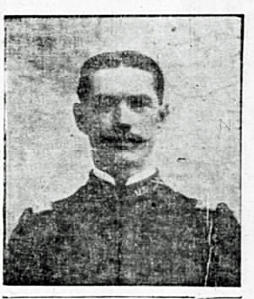
1st Lieutenant Orrin R.
Wolfe 1898
Photo taken when he was a member of the 22nd Infantry
Photo from The
Courier-Journal, Louisville, Kentucky May 1, 1898
via shirley1451 from Ancestry.com
Ed., The following story was written in about
1926-1927, by Colonel Orrin R. Wolfe,
as his memories of his time as a First Lieutenant in the 22nd
Infantry during the Spanish American War.
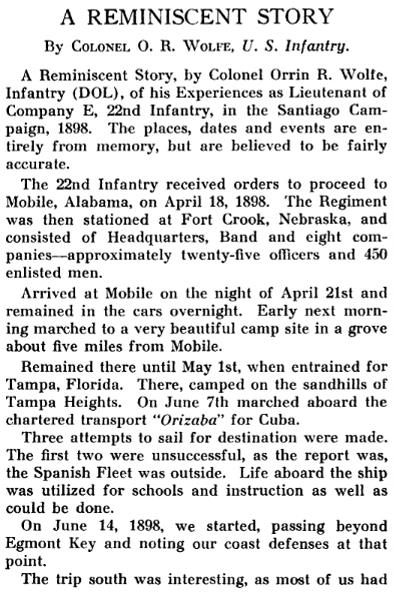
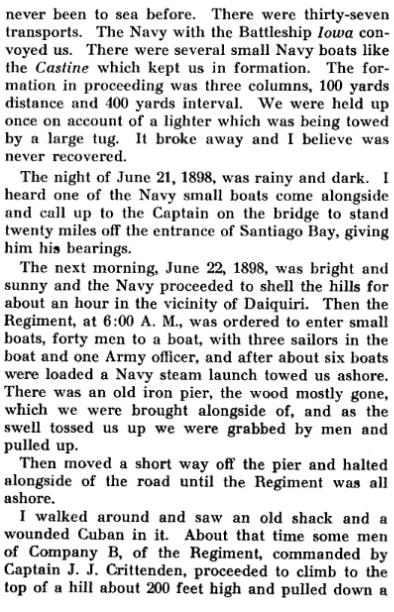
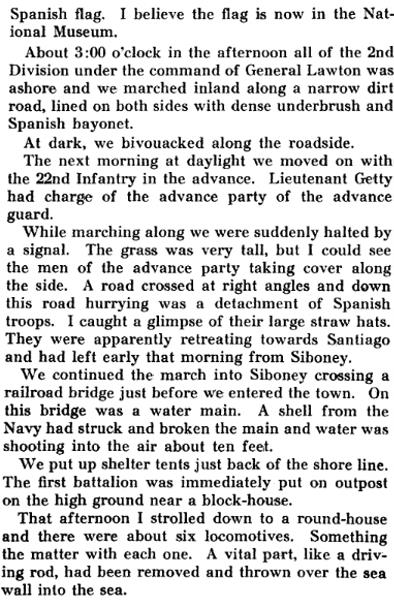
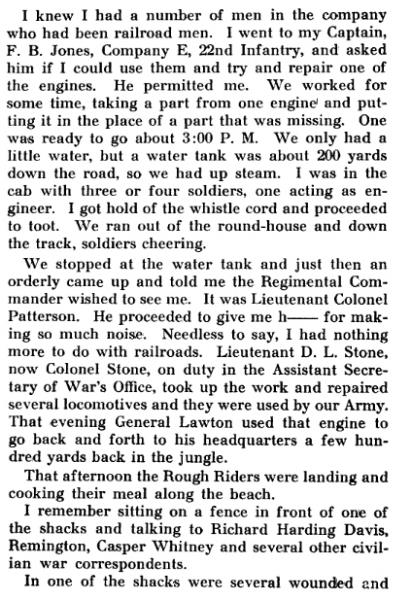
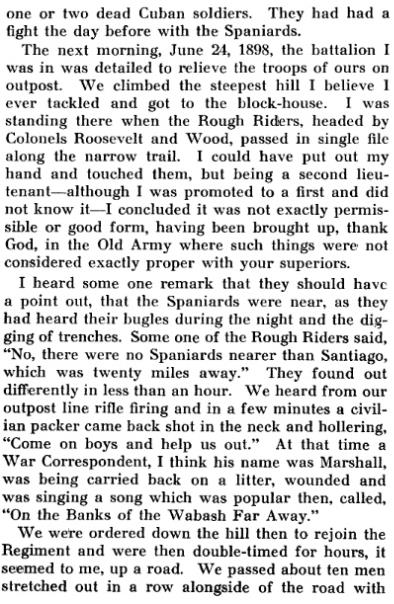
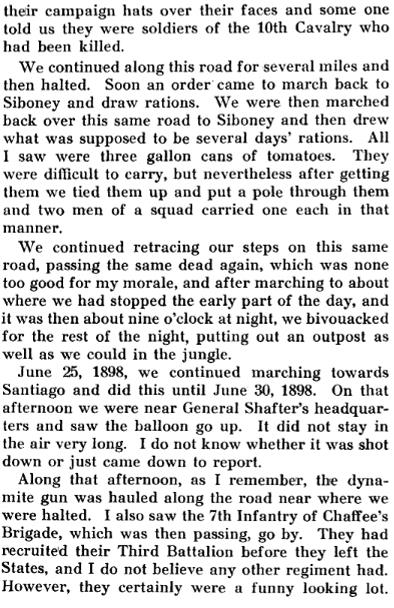
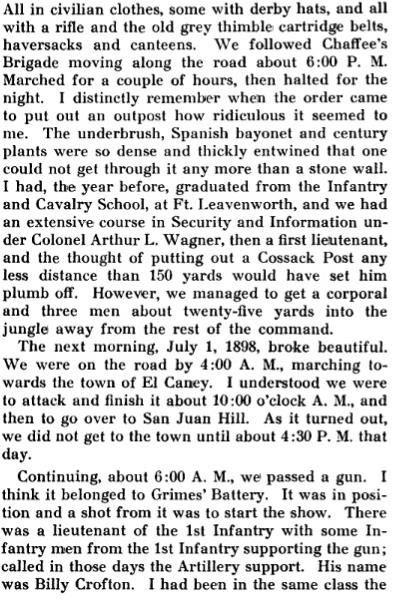
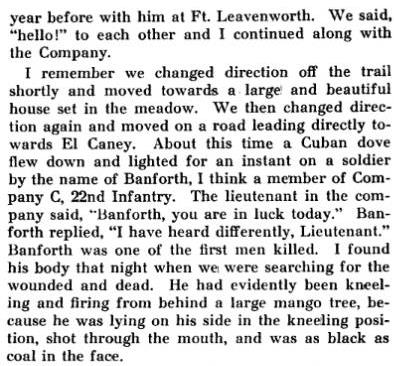
(Website Ed., the Soldier named above as
"Banforth" , who had a premonition of his death, was
most likely
Private James Bampton, of Company C, listed in the Regimental
History of 1904 as being killed in action on July 1, 1898.)
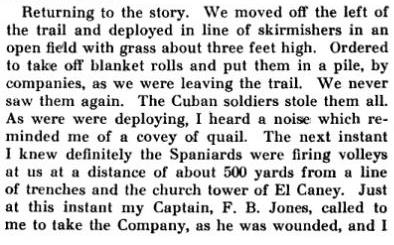
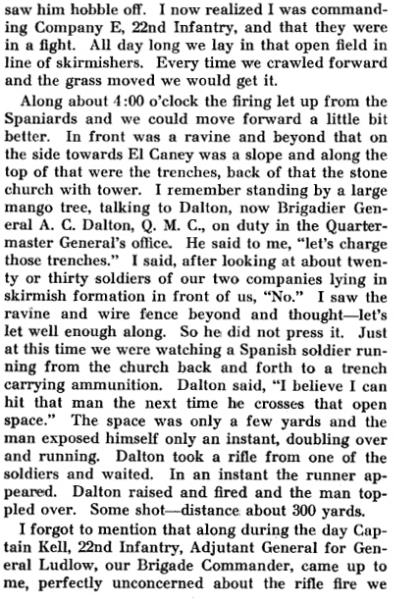
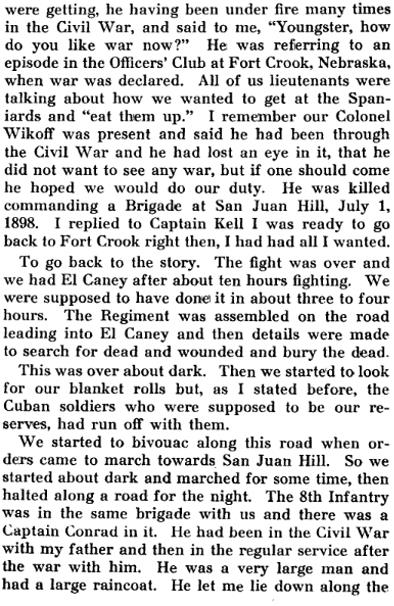
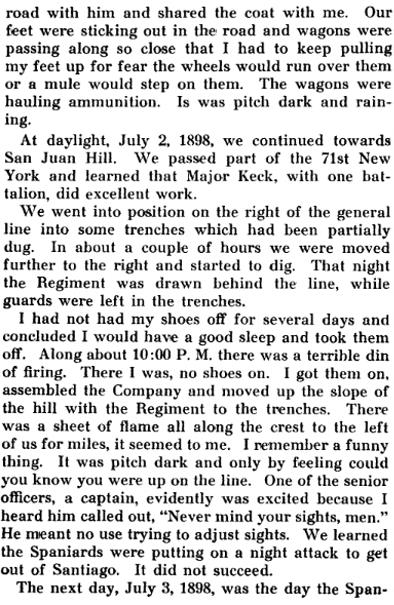
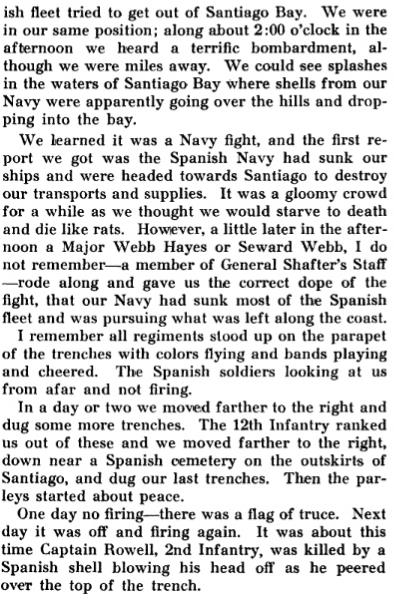
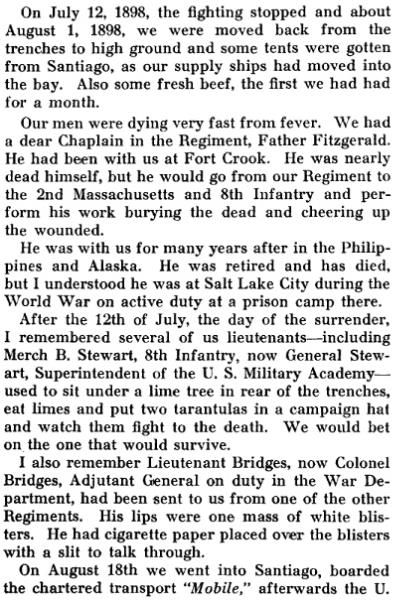

**********************
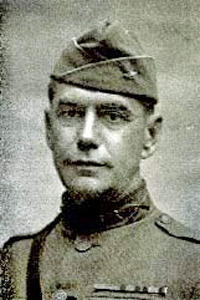
Colonel Orrin R. Wolfe
The above photo was taken in 1920 or afterward,
when Wolfe had attained the rank of Colonel
around the time he wrote the above story.
Orrin Rawson Wolfe was born in
Kentucky on June 10, 1869. He entered the US Military Academy on
September 1, 1889,
but failing grades on examinations led to his leaving the Academy
on January 17, 1890. He then enlisted in the Regular Army,
becoming a Private in the 14th Infantry on May 28, 1890, and
served with Companies H and I, attaining the rank of Corporal,
before being discharged on February 4, 1893. During his time with
the 14th Infantry, he was one of several non-commissioned
officers
who were examined for a commission to officer, and he passed the
examination and filled all the requirements for advancement.
He was commissioned a Second
Lieutenant in the 22nd Infantry, the date of his commission being
November 19, 1892.
He formally accepted his commission on February 5, 1893, and
became an officer in the 22nd Infantry,
an organization in which he was to serve for the next nineteen
years. He was with the Regiment at Fort Keogh and Fort Crook.
He was promoted to 1st
Lieutenant on April 26, 1898, just before the Regiment left for
Cuba.
He assumed command of Company E during the battle of El Caney,
when the Company Commander, CPT Frank B. Jones
was wounded. He left Company E before December of 1898 and
travelled with the Regiment to the Philippines.
Wolfe was severely wounded in the left lung during an engagement
with Filipino insurgents in the mountains near the
headwaters of the Rio Chico, on the island of Luzon on March 24,
1900. At that time he was serving as the Aide de Camp
for Brigadier General Frederick Funston, and in that capacity was
commanding the District Headquarters Scouts.
He was promoted to Captain of
the 22nd Infantry on February 2, 1901. He commanded Company D,
1st Battalion 22nd Infantry
during the 3rd Sulu Expedition of 1905, returned with the
Regiment to the contintenal United States and its service there
1906-1908, and also during its time in Alaska, 1908-1910. Wolfe
became the 22nd Infantry Regimental Quartermaster
from July 10, 1911 to December 2, 1912.
On December 16, 1912, he left
his long service with the 22nd Infantry and was assigned to the
16th Infantry.
While still a Captain, with the 16th Infantry, he became
temporary commander of that Regiment twice,
from July 28 to August 12, 1915, and again from September 4 to
September 12, 1915.
He was promoted to Major of the
26th Infantry on October 7, 1915. On July 15, 1916 Wolfe was
detailed
to the Adjutant General’s Department. On May 15, 1917 he was
promoted to Lieutenant Colonel of Infantry. During 1917
the National Army was formed. This was a loose conglomeration of
Regular Army, National Guard and units made up
from the huge military draft instituted for fighting World War I.
Wolfe was appointed as a full Colonel in the National Army
on August 5, 1917. He officially accepted the appointment on
August 21, 1917, and the next day he relinquished his position
as Adjutant General. He was given command of the 118th Infantry
Regiment during this time and took the Regiment to France
as part of the 30th Division. The 30th Division was formed from
National Guard units from the states of Tennessee, North Carolina
and South Carolina. Wolfe's 118th Infantry Regiment bears the
name of the South Carolina "Palmetto" Regiment, from
their days of fighting
in the Revolutionary War, the War of 1812 and the War with Mexico
in the 1840's. Wolfe received a commendation from
the Commander in Chief of the American Expeditionary Forces,
General John J. Pershing, for his leadership of the 118th
Infantry
during the fighting in 1918. A description of that action
follows:
"September 26, 1918: The
118th Infantry, under the command of Col. Orrin R. Wolfe, is dug
in and prepared to straighten
a crescent-shaped 1,200-yard portion of the American Army’s
3,750-yard front. Preceded by a 10-minute artillery barrage
on September 27, the First and Third Battalions of the 118th
advanced this portion of the line several hundred yards.
During this engagement, the S.C. Army National Guard’s 118th
Infantry Regiment becomes the first American regiment
to deliver a successful attack against the
“impregnable” Hindenburg Line system. Within less than
two hours the regiment’s
frontal attack had accomplished all of its objectives. The
Prussians at the Hindenburg Line said of the Palmetto Regiment
“They came on in spite of hell. What is this place, South
Carolina, anyway?”"
On November 7, 1918, Wolfe was
given temporary command of the 59th Infantry Brigade. With World
War I ended,
the National Army was disbanded. Wolfe received an Honorable
discharge from the National Army on August 31, 1919,
and reverted back to his Regular Army rank of Lt. Colonel. On
July 1, 1920 Wolfe was promoted to Colonel and assumed command
of the 18th Infantry Regiment on July 3, 1920, a position he
occupied until 1923. In 1924 he was appointed as Post Commander
of Camp Wadsworth, New York. He retired from the Army on June 30,
1933 after 44 years of service.
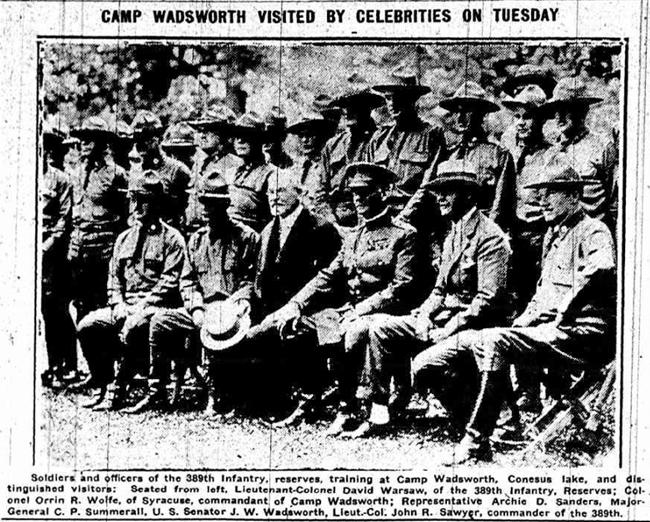
In July, 1925, Major
General Charles P. Summerall, one of only 21 Major Generals in
the Army
(the highest rank in the Army at that time), visited the newly
built Reserve Officers Training Camp at
Camp Wadsworth, at Conesus Lake, Geneseo, New York. The camp
Commandant was Colonel Orrin R. Wolfe,
shown in the above photo, seated, second from the left.
Photo from The Livingston Republican, Thursday, July 30, 1925
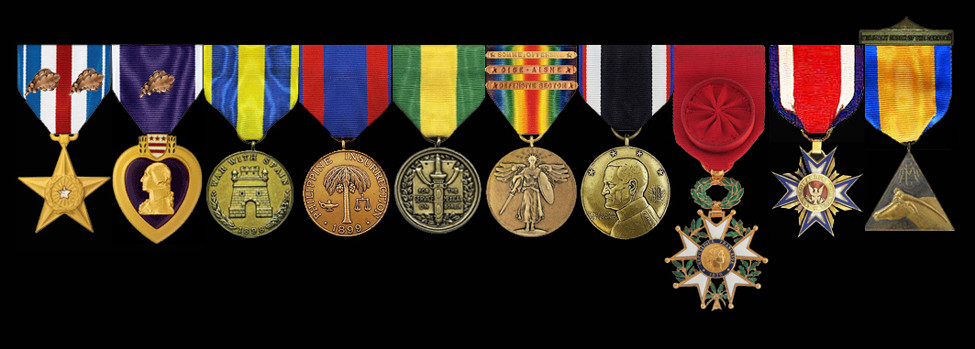
Orrin R. Wolfe's decorations
**********************
Orrin R. Wolfe's story of his time in Cuba is taken from a publication in the Library of Congress entitled:
" The Santiago campaign; reminiscences of
the operations for the capture of Santiago de Cuba in the
Spanish-American war, June and July, 1898,
written by participants in the campaign and published by the
Society of Santiago de Cuba."
Published 1927
Author: Society of the Army of Santiago de Cuba.
Collection: The United States and its Territories, 1870 - 1925:
The Age of Imperialism
---------------
Biographical information about Orrin R. Wolfe is taken from a number of sources, primarily from:
The History of the Twenty-second United States
Infantry, published in the Philippines in 1904
Official Army Registers published by the Adjutant General's
Office 1922, 1933
General Orders No. 49, Headquarters 30th Division 1918
National Guard Magazine November 2008
Home | Photos | Battles & History | Current |
Rosters & Reports | Medal of Honor | Killed
in Action |
Personnel Locator | Commanders | Station
List | Campaigns |
Honors | Insignia & Memorabilia | 4-42
Artillery | Taps |
What's New | Editorial | Links |